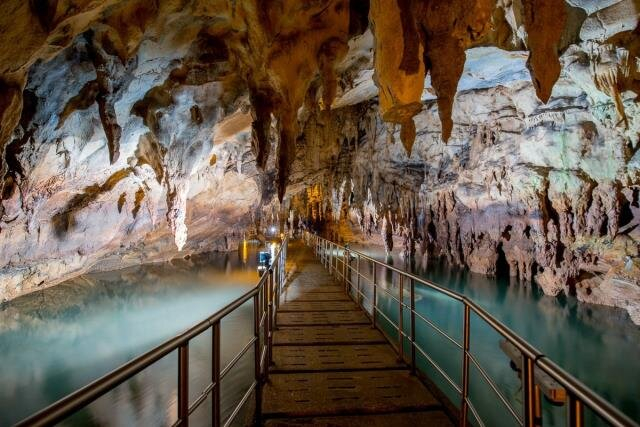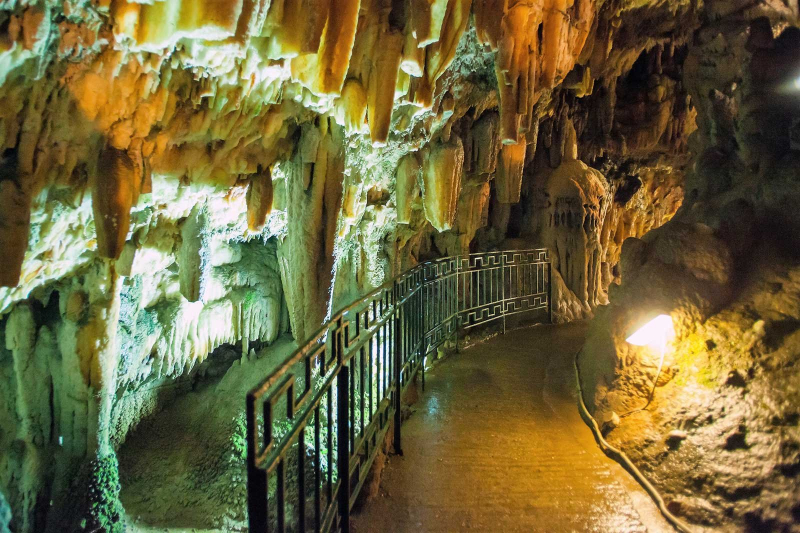Cave of the Dragon
Legend has it that the Cave of the Dragon was once a gold mine guarded by a dragon who breathed poison to keep anyone from entering. The cave opened in 2009 to anyone brave enough to brave the dragon's fumes, and no one has yet been poisoned. Seven underground lakes and ten caverns of varying sizes are linked by corridors and tunnels. The cave is of paleontological interest, and bare bones estimated to be 10,000 years old have been discovered there.
Adaptations to the cave to make it more accessible for visitors, as well as the arrangement of the surrounding area and the construction of buildings for the site's operation, were carried out using minimally invasive methods. This was especially important for work inside the cave, in order to preserve the spectacular stalactite formations. External structures were built in accordance with local architectural traditions, using local stone and wood and featuring ceramic decorations. The project's goals were to preserve the cave while also capitalizing on its tourist potential. It has been successful in this regard. The number of visitors has steadily increased, from around 29 000 in 2013 to nearly 34 000 by 2017. Furthermore, by improving Kastoria's tourist offering, the project has boosted the local economy.
Location: Kastoria, Greece












